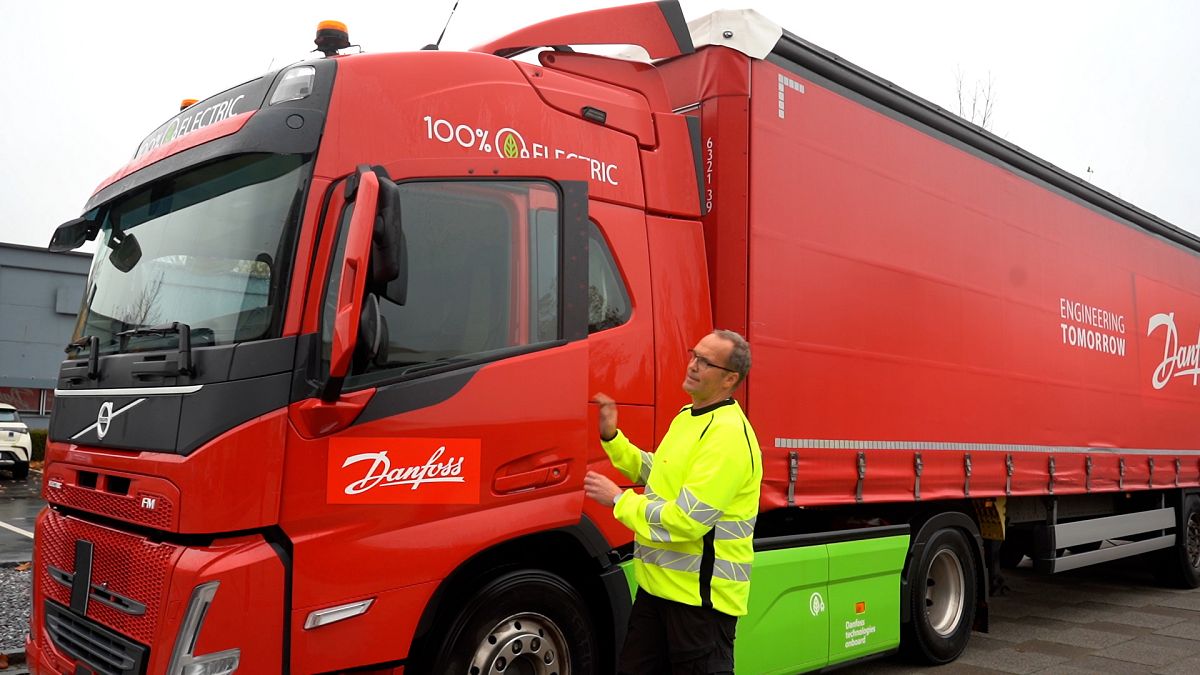
The onboard chargers are currently being used in eight electric trucks in Denmark to decarbonise supply chains. have become a common feature on our roads but what does it take to electrify a truck that’s six metres long and three metres high? The global engineering giant, Danfoss, uses eight fully electric trucks that travel between its production and logistical sites in Denmark. In 2023, Danfoss collaborated with Volvo to show how its tech can help decarbonise supply chains.
"We have the ambition to be our customers' preferred decarbonisation partner and to earn that respect and loyalty from our customers, we need to build a leading position ourselves in sustainability," Torben Christensen, chief sustainability officer and head of global services at Danfoss, told Euronews Next. Inside a Danfoss factory in Nordborg, Denmark, two gigantic robotic arms restlessly assemble the onboard charger. The grey box, which is the size of a big suitcase, is an essential system in an EV as it manages how the battery gets charged.

Most public and home charging systems provide alternating current (AC) electricity, but store energy as direct current (DC). The onboard charger manages this conversion. Without it, an EV would rely entirely on external DC fast chargers, which are less common and more expensive to install.
Large lorries require a larger onboard charger compared to passenger EVs because of their higher energy demands and need for rapid charging during short stops to keep the vehicle operational. Danfoss Editron’s onboard charger is specifically designed for heavy-duty electric vehicles, such as trucks and buses. It provides up to 44 kW of charging power, which is significantly higher than the typical 7.
2 to 22 kW onboard chargers used in passenger EVs. The Volvo truck is packed with other Danfoss components needed for charging in the truck and customised superchargers are installed in factories, the company says. Danfoss explains that the trucks have to take considerable time out of operation on weekdays to charge.
The truck’s battery can be charged during loading and unloading which usually takes about 15 minutes, allowing it to be "in operation 24 hours in principle. A longer overnight charge is needed on weekends when the trucks are not in operation. The onboard charger can also supply power to equipment attached to industrial vehicles, such as cranes or loaders.
Heavy-duty vehicles account for 25 per cent of greenhouse gas emissions from EU road transport. According to the International Energy Agency, sales of in Europe nearly tripled in 2023, reaching over 10,000 units, more than a 1.5 per cent increase in total truck sales.
Danfoss says the fleet helps reduce its emissions by 10 to 15 per cent in Denmark in scopes 1 and 2, indices for direct and indirect emissions from purchased energy respectively. This reduction is about 250,000 litres of saved diesel per year, the company says. Video editor.










